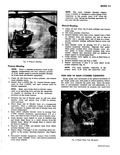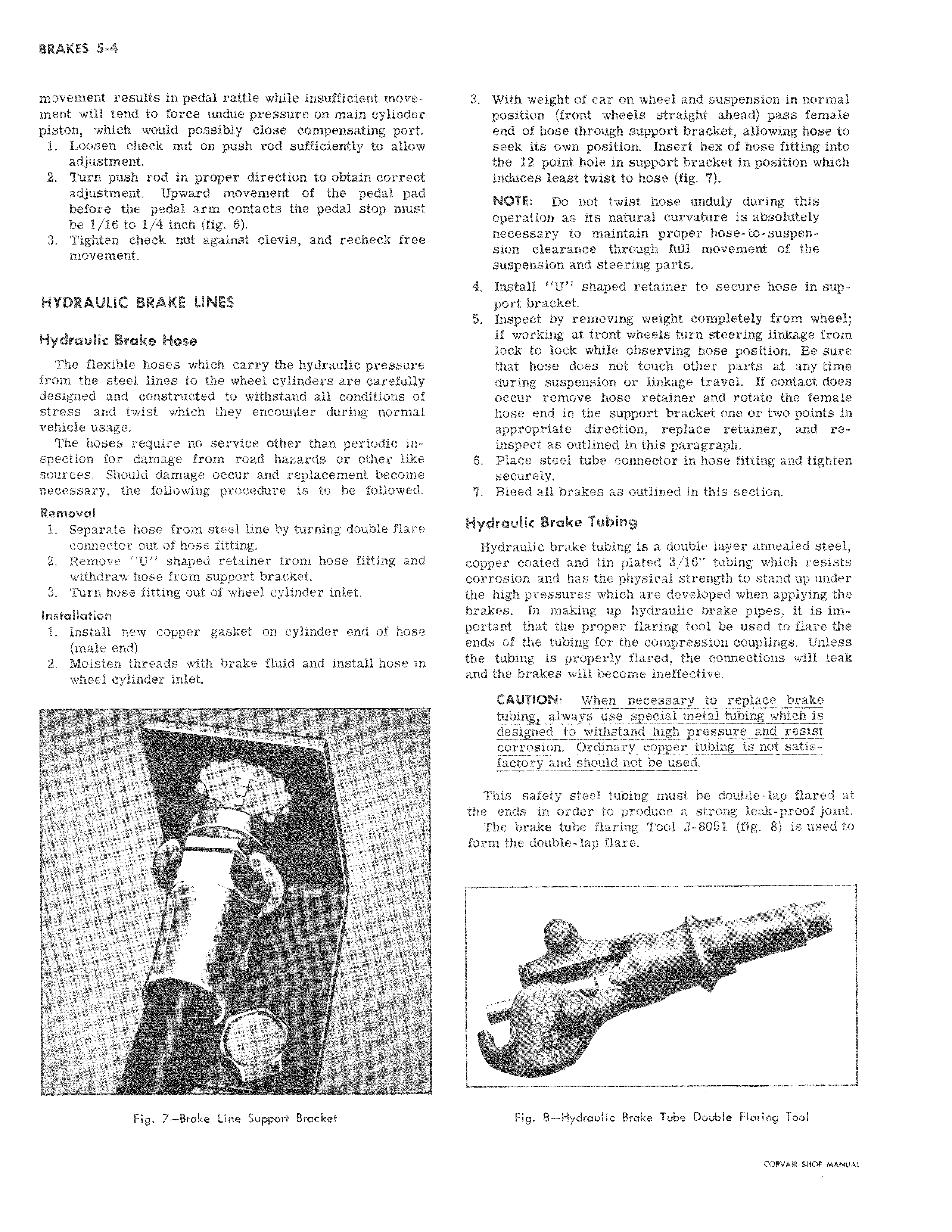Jeep Parts Wiki | Ford Parts Wiki
Home | Search | Browse
|
Corvair Chassis Shop Manual December 1964 |
|
Prev

 Next
Next
movement results in pedal rattle while insufficient movement will tend to force undue pressure on main cylindex piston which would possibly close compensating port 1 Loosen check nut on push rod sufficiently to allo adjustment 2 Turn push rod in proper direction to obtain corre adjustment Upward movement of the pedal pad before the pedal arm contacts the pedal stop must be 1 16 to 1 4 inch fig 6 3 Tighten check nut against clevis and recheck fre movement HYDRAULIC BRAKE LINES I Hydraulic Brake Hose I The flexible hoses which carry the hydraulic pressure from the steel lines to the wheel cylinders are carefully designed and constructed to withstand all conditions o stress and twist which they encounter during normal vehicle usage The hoses require no service other than periodic ini spection for damage from road hazards or other like sources Should damage occur and replacement becom necessary the following procedure is to be followe Removal 1 Separate hose from steel line by turning double flare connector out of hose fitting 2 Remove U shaped retainer from hose fitting an withdraw hose from support bracket 3 Turn hose fitting out of wheel cylinder inlet Installation 1 Install new copper gasket on cylinder end of hose male end I 2 Moisten threads with brake fluid and install hose in wheel cylinder inlet an N ih5vo3 af a r i Wl y7t i 7 t t t t Fig 7 Brake line Support Bracket 3 With weight of car on wheel and suspension in normal position front wheels straight ahead pass female end of hose through support bracket allowing hose to seeit its own position Insert hex of hose fitting into the 12 point hole in support bracket in position which indulces least twist to hose fig 7 NOJE Do not twist hose unduly during this ope4ation as its natural curvature is absolutely necOssary to maintain proper hose to suspensiO clearance through full movement of the suspension and steering parts 4 Install U shaped retainer to secure hose in support bracket 5 Inspect by removing weight completely from wheel if working at front wheels turn steering linkage from loci to lock while observing hose position Be sure that hose does not touch other parts at anytime during suspension or linkage travel If contact does occur remove hose retainer and rotate the female hose end in the support bracket one or two points in appropriate direction replace retainer and reinspect as outlined in this paragraph 6 place steel tube connector in hose fitting and tighten securely 7 Bleed all brakes as outlined in this section Hydraulic Brake Tubing Hydraulic brake tubing is a double layer annealed steel copper jcoated and tin plated 3 16 tubing which resists corrosibn and has the physical strength to stand up under the high pressures which are developed when applying the brakes In making up hydraulic brake pipes it is important that the proper flaring tool be used to flare the ends of the tubing for the compression couplings Unless the tubing is properly flared the connections will leak and the brakes will become ineffective CAUTION When necessary to replace brake tubing always use special metal tubing which is deSi ed to withstand high pressure and resist corrosion Ordinary copper tubing is not satisfactory and should not be used This safety steel tubing must be double lap flared at the ends in order to produce a strong leak proof joint The brake tube flaring Tool J 8051 fig 8 is used to form the double lap flare I Y F l r l Fig 8 Hydraulic Brake Tube Double Flaring Too

 Next
Next